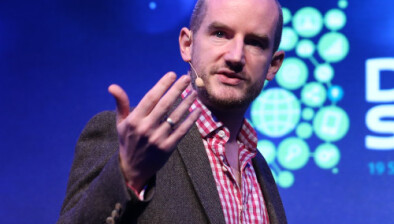Deirdre Malone: Equal status decision – Starbucks

Deirdre Malone
Deirdre Malone details a very interesting discrimination case.
Suchavadee Foley ordered a tea from Starbucks last January. Not a tricky transaction, however, the interaction resulted in a €12,000 award to Ms Foley. When placing her order, Ms Foley started to spell an abbreviated version of her name but was stopped by a laugh from the employee serving Ms Foley. The employee said that she would “draw eyes” instead, and Ms Foley, shocked and unsure how to react, simply laughed and said “okay”.
Ms Foley moved to sit down, and her boyfriend collected the disposable cup showing a drawing of a smiley face with “slanty eyes”. Ms Foley is of Thai-Irish heritage, and has been living in Ireland since she was a young girl.
Ms Foley’s boyfriend immediately complained about the drawing at the counter and spoke with a supervisor. The supervisor apologised and offered vouchers, but Ms Foley did not want them. They waited for the employee to approach them to apologise but, it later transpired in evidence that the employee was on her break.
Ms Foley lodged a complaint with the WRC under the Equal Status Acts, alleging discrimination on the grounds of race.
Defending an Equal Status claim
The company put the following points to Ms Foley setting out why it disputed the allegation of discrimination against it:
- It was a pleasant encounter, as Ms Foley was laughing.
- The image was not offensive because it was drawn like an emoji.
- It was not meant to be a racial slur. In fact, the employee thought that Ms Foley was very glamorous and did not mean any malice.
- Ms Foley agreed to the drawing.
All of the above was disputed by Ms Foley, who said that she had never asked for the drawing to be made.
At the hearing, the employee apologised for the upset caused and spoke about her personal respect for Japanese-Brazilians (coming from Brazil herself). At the time, the employee had only had the job for a month. She gave evidence to state that she felt the drawing of the image would help make it easy for her to identify Ms Foley.
To bolster this defence, the company explained that it had a harassment policy and had provided training to its staff. It commented that the incident was a benign one and that Ms Foley had not been treated less favourably than any others who would also have had drawings composed of them.
The company expanded on its defence around training provided to its employees. It pointed to existing case law, highlighting that training does not have to be perfect. In order to fully defend the complaint, the training needed to be comprehensive enough to protect the employer from liability. They also asked for the decision to be anonymised because of the disproportionate impact that the finding may have on its business.
Outcome
In his conclusions, the Adjudication Offer (AO) felt that the drawing was a clear visual depiction related to Ms Foley’s race. He commented that it was “as offensive and as unimaginative as a 19th century Punch cartoon”.
The AO confirmed that the conduct was unwanted. The employee’s evidence, and her apology stating that she had not intended to humiliate or make Ms Foley feel uncomfortable, was accepted. That did not change the fact that the drawing had a degrading and humiliating effect on Ms Foley. The harassment occurred.
The AO held that the customer service training and harassment policy did not have sufficient information for staff to explain about the power that drawings and pictures may have on the recipient. Harassment is in the eye of the beholder. The company was held vicariously liable for the acts of its employee, notwithstanding that there was no malice attached to her actions, and she was trained.
Employer learnings
The employee was fully trained in customer service and harassment. Still, the reprehensible act occurred. The WRC assessed the extent of training provided to the employee and held that it did not go far enough, because it did not consider the impact that visual depictions selected by employees would have on members of the public.
It is worthwhile to review policies, to ensure that the impact of inappropriate behaviour should be assessed and discussed as part of training for employees. By way of comment, I suspect that an award in favour of Ms Foley may still have been made against Starbucks, even if the employees had been trained on the impact of discriminatory behaviour on the recipient.

- Deirdre Malone is a partner at Ronan Daly Jermyn








